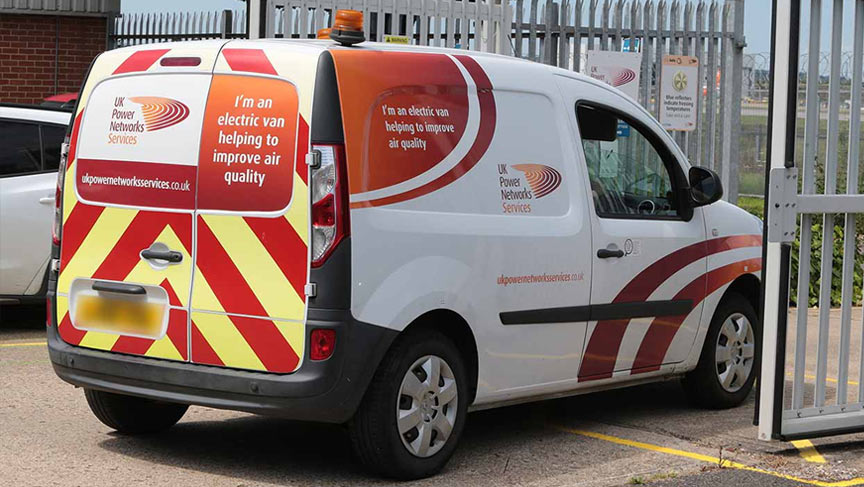Insight
The world of energy is changing

Pantelis Stefas CEng MIET Senior Consultant at UK Power Networks Services, talks through the challenges of meeting the future energy demands of low carbon technologies which are increasing apace.
As the UK transitions towards a sustainable energy future, electricity generation from Distributed Energy Resources (DER) and electricity demand of low carbon technologies such as Electric Vehicles (EVs), heat pumps, and hydrogen are expected to increase significantly. The national Energy System Operator (ESO) has presented its Future Energy Scenarios (FES), which suggest several potential pathways to decarbonise the UK's energy system by 2050. The FES predicts an increase in both generation and demand capacity over the coming years[1].
This has led to a surge in connection applications to Distribution Network Operators (DNOs), which may require infrastructure upgrades at the distribution network - laying more cables, developing overhead lines, increasing substation capacity and installing new equipment. Most recently, we have observed that connecting large-scale power generation to the distribution network triggers reinforcement of the transmission network at Grid Supply Points (GSPs) – the interlink between transmission and distribution networks, with some connection dates running to the late 2030s. In other cases, completely new GSPs will need to be established, resulting in longer timescales associated with wider works required to develop new transmission system routes.
The energy industry is taking steps to address these challenges. In November 2023, Ofgem and DESNZ jointly published the Connections Action Plan (CAP). The plan outlines a framework for improving the GB connections process and establishing the new Ofgem-chaired Connections Delivery Board (CDB) to oversee its implementation. The CAP calls for network companies, the ESO, and the sector as a whole to make significant improvements in accelerating network connections.
The Energy Networks Association (ENA) and the ESO have developed plans to speed up the process of connecting new projects to the grid. The ENA's three-step plan aims to prioritise mature projects and improve coordination between transmission and distribution networks. The ESO's five-point plan includes waiving cancellation fees for eligible developers, updating connection rate assumptions, changing storage treatment on the transmission network, and offering interim options for storage projects to connect sooner. Across all industry initiatives flexibility is one of the common denominator to achieve faster connections for customers.
[1] Future Energy Scenarios (FES) | ESO, https://www.nationalgrideso.com/future-energy/future-energy-scenarios-fes

Improving coordination between transmission and distribution networks
One of the industry initiatives, targets changing how transmission and distribution coordinate connections by using Active Network Management (ANM) schemes to implement ‘Technical Limits’.
DNOs and the ESO are collaborating to establish clear and consistent boundaries, and the aim is to connect new customers faster without affecting the transmission system, by keeping the power flow below agreed ‘Technical Limits’ through these boundaries (i.e. GSPs). The ‘Technical Limits’ approach is a great example of how simplicity can bring a positive revolution in the power industry.
This approach allows sites to be connected faster through flexible connections, potentially within a matter of months, while transmission reinforcement works are underway. Although their output may be curtailed for a specific period of the year to ensure network stability, this initiative is a great step towards a better power system that benefits all stakeholders in the industry.

Accelerating low-carbon projects through flexible connections
The ‘Technical Limits’ initiative in the UK demonstrates how DNOs are adopting flexible connections to expedite new electricity connections. Unlike traditional ‘firm’ connections, where the capacity is assumed to remain unchanged over time, flexible connections are considered ‘non-firm’ connections that rely on ANM schemes that enable DNOs to remotely manage power flow and adjust the capacity to remain within safe network operating parameters. Flexible connections at the distribution level have been offered to customers by DNOs for the past few years, resulting in cost-effective connection options based on available capacity.
A connection offer based on ‘Technical Limits’ that is classified as a ‘non-firm’ offer is designed to manage a single generator in a restricted part of the network. This connection shall fall under the Single Generation Active Network Management (SGANM) scheme as defined by ENA[1].
ENA has also defined other types of flexible connections2 that should be more appropriate in other applications, depending on the specific characteristics of a project. For example, DNOs may provide export-limited connections to solar PV plants that are located in constrained regions. This type of flexible connection requires solar generators to not exceed an agreed export capacity. This connection agreement may lead to curtailment of solar generation during certain times, such as on a sunny day when solar generation peaks.
In Figure 1, see how an export-limited connection works for a typical behind-the-meter solar PV system. When the system generates more electricity than the demand, the excess is exported to the distribution system. However, when the export power reaches the export limit threshold set by the DNO, any additional generation will be curtailed to avoid exceeding the maximum allowed export capacity. This reduction in solar power generation will impact the generator's business case. However, it is necessary to ensure that DNOs can maintain grid stability, prevent power outages, and keep the network operating within its allowed limits.
[1] Flexibility Connections: Explainer and Q&A, August 2021 │Version 1, ENA, ON21-PRJ Open Networks Flexibility Connections Explainer and Q&A (19 Aug 2021).pdf (energynetworks.org)

Flexible connections may also be a cost-effective and sustainable option for new connecting customers and already-connected customers who wish to increase their capacity and face long timescales. In such cases, if the customers have controllable power needs, like EV charging, heat pumps, and electric energy storage, they can opt for a timed import connection agreement with the DNO and manage their load appropriately via behind-the-meter load management solutions.
For example, let's consider a depot-based commercial fleet that operates during typical daytime hours and charges its EVs overnight. This creates an opportunity to use the low power demand period overnight to recharge the fleet's vehicles and minimise any impact on the network's peak demand, which typically takes place in the afternoon. DNOs can take advantage of this load profile and offer different import capacities, unlocking larger capacity overnight to enable the recharging of the EV fleet.
Figure 2 shows the theoretical load for an electric fleet that is based in a depot and utilises a timed import connection agreement. It is assumed that the depot has a ‘non-firm’ capacity agreement of 1000kVA throughout the day, which increases to 1500kVA between 23:00 and 06:00, when typically, green Distribution Use of System tariffs (DUoS) occur. As shown in the graph, the EV load is managed using a load management system to ensure that it remains within the maximum capacity of the site when the vehicles are plugged in for charging in the afternoon. At 23:00 when the site is assumed to have agreed to a larger capacity, the load management system allows more power to be drawn from the electric fleet, enabling them to be fully charged before the next morning. This is an innovative way to promote sustainable transportation without compromising the stability of the power grid.





